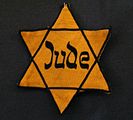Contents
- Incumbents
- National level
- Events
- January
- February
- March
- April
- May
- June
- July
- August
- September
- October
- November
- December
- Births
- Deaths
- References
| |||||
| Decades: | |||||
|---|---|---|---|---|---|
| See also: | Other events of 1941 History of Germany • Timeline • Years | ||||
Events in the year 1941 in Germany .




